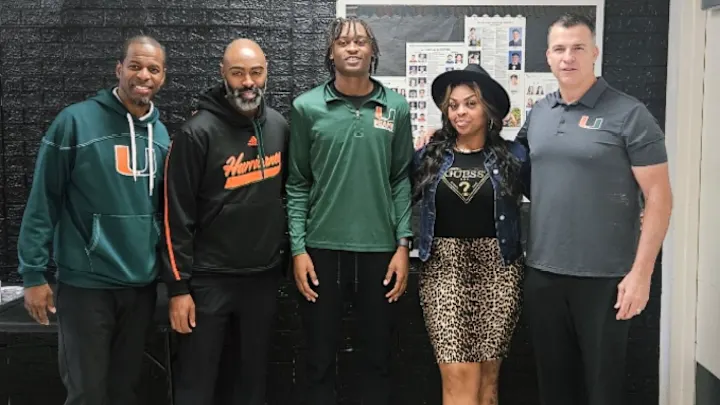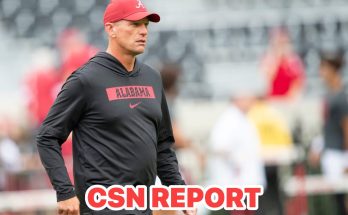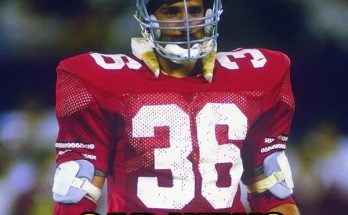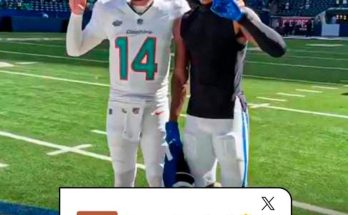The college football transfer portal has become a hotbed of activity over the past few years, and in 2025, two of the Atlantic Coast Conference’s (ACC) most storied programs, Miami Hurricanes and Florida State Seminoles, have made waves with their portal acquisitions. As these two programs gear up for the upcoming season, fans and analysts alike are already speculating on which school made the better moves in the transfer market. Both Miami and Florida State have loaded up on talent, but their strategies and priorities differ, setting the stage for a fascinating offseason showdown well before kickoff. In this article, we’ll take a deep dive into the portal pickups by both programs, analyze their potential impact, and explore which team looks to have gained the upper hand in this transfer portal arms race.
Miami’s transfer portal activity this year reflects a concerted effort to fill some glaring holes on the roster, with a mix of experienced veterans and high-upside players joining the Hurricanes. Miami’s strategy seems focused on immediate impact and adding depth to positions that underperformed last season. One of their most notable acquisitions is quarterback Trey Benson, a seasoned passer with two years of starting experience at a Power Five program. Benson brings leadership and poise to a quarterback room that struggled with consistency. His ability to manage games and make quick decisions under pressure gives Miami a more stable presence under center, which is crucial for the Hurricanes’ offensive identity.
In addition to Benson, Miami has targeted several key skill position players to boost its offense. They added wide receiver DeAndre Marshall, a dynamic route-runner known for his explosive speed and yards-after-catch ability. Marshall’s arrival gives the Hurricanes a legitimate deep threat and a versatile weapon who can stretch defenses vertically and horizontally. Complementing Marshall is running back Isaiah Knox, a tough, downhill runner who provides a power dimension to Miami’s backfield. Knox’s physical running style contrasts nicely with Miami’s existing speed backs, giving the offense more balance and unpredictability.
Defensively, Miami went after reinforcements in the secondary, an area that was a glaring weakness last season. The Hurricanes signed cornerback Malik Thomas, a seasoned defender with starting experience at a major program. Thomas’s quick hips and ball skills will be invaluable in Miami’s defensive scheme, particularly against the pass-heavy offenses the ACC features. Alongside Thomas, Miami also secured linebacker Jalen Ford, a versatile defender capable of playing multiple roles, from pass coverage to run-stopping. Ford’s presence adds much-needed depth and experience to a linebacking corps that lacked consistency in 2024.
On the flip side, Florida State’s transfer portal haul took a slightly different approach. The Seminoles focused heavily on offensive line reinforcements, recognizing that their inability to protect the quarterback and open running lanes significantly hampered their offensive production last year. Florida State added three offensive linemen from the portal, including tackle Jamal Carter, a massive, athletic blocker with four years of starting experience in the SEC. Carter’s size and technique immediately boost the Seminoles’ pass protection, while his run-blocking skills are expected to open up holes for their running backs.
Florida State also focused on upgrading their skill positions with transfers like wide receiver Kyler Simmons, a polished route runner with good hands and reliable after-the-catch ability. Simmons pairs well with Florida State’s young quarterback, providing a safety valve and reliable target in crucial situations. Additionally, the Seminoles added tight end Marcus Reed, a physically imposing player who excels in blocking and receiving, adding another dimension to Florida State’s offense and giving their play-calling more flexibility.
On defense, Florida State’s portal activity featured an emphasis on the defensive line and secondary. Defensive end Elijah Hayes, a relentless pass rusher with proven production at a Power Five school, is a marquee addition. Hayes’s ability to collapse the pocket from the edge gives Florida State an improved pass rush, which was lacking in 2024. In the secondary, Florida State added safety Terrence Miller, a rangy defender with a knack for making big plays in coverage. Miller’s leadership and instincts are expected to shore up the back end of the defense, which struggled to contain opposing receivers last season.
When comparing the two programs’ portal acquisitions, it becomes clear that Miami’s focus has been on adding experienced playmakers on offense and shoring up the secondary, while Florida State has concentrated on building a dominant offensive line and enhancing both their pass rush and secondary depth. Both approaches address significant weaknesses from their 2024 campaigns, but the question remains: who made the better moves?
From Miami’s perspective, the addition of a seasoned quarterback like Trey Benson cannot be overstated. Having a reliable and proven quarterback can change the entire complexion of a team’s offense. Benson’s leadership and game management skills are the foundation upon which Miami hopes to build a more consistent and explosive offense. The complementary additions of wide receiver DeAndre Marshall and running back Isaiah Knox create a balanced and versatile offensive unit that can attack defenses from multiple angles. On defense, bolstering the secondary with Malik Thomas and reinforcing the linebacker corps with Jalen Ford addresses two of Miami’s biggest weaknesses, potentially transforming the Hurricanes into a much tougher team to score against.
Florida State’s strategy, meanwhile, demonstrates a commitment to building from the trenches outward. By upgrading the offensive line with proven talent like Jamal Carter, the Seminoles aim to give their young quarterback time and space to operate, which could dramatically improve offensive efficiency. The additions of wide receiver Kyler Simmons and tight end Marcus Reed provide key weapons for the offense, but it’s the offensive line where Florida State’s portal haul may have the most significant impact. Defensively, adding a potent pass rusher in Elijah Hayes and a playmaking safety in Terrence Miller could elevate Florida State’s defense from average to formidable. This focus on defense and offensive line play complements their existing strengths and could give the Seminoles a more balanced team overall.
However, there are some risks involved with both teams’ approaches. Miami’s reliance on a transfer quarterback means that cohesion and chemistry with the offensive line and receivers will be crucial. Benson will need time to adapt to Miami’s system and build rapport with his new teammates. Similarly, the impact of the new skill players depends heavily on how quickly they can assimilate. On the defensive side, Miami’s secondary additions will be tested against the ACC’s potent passing attacks, and success hinges on effective communication and team defense.
Florida State’s heavy investment in the offensive line could pay off big, but integrating three new starters on the line is no small task. Offensive line play requires excellent coordination and understanding among players, and the Seminoles’ line chemistry will be tested early. Moreover, the success of their defensive additions will depend on how quickly they can acclimate to Florida State’s schemes and the ACC’s offensive tempo.
Ultimately, the decision of which program made the better portal moves may come down to fit, coaching, and development. Miami’s strategy of adding experienced skill position players and a proven quarterback seems geared towards a quicker turnaround on offense, while Florida State’s more foundational approach could pay dividends in the long run by solidifying the offensive line and pass rush. Both teams have addressed key weaknesses and added quality players, but the difference may be in who integrates their transfers more seamlessly and maximizes their talents.
It’s also worth noting that the portal is just one part of the equation. Both Miami and Florida State have strong recruiting classes arriving as well, and combining new high school talent with experienced transfers will ultimately determine their success. Depth, health, and coaching adjustments will all factor into how these portal acquisitions translate into wins on the field.
As the 2025 season approaches, the ACC will be watching closely to see how these two traditional rivals capitalize on their portal haul. Miami’s moves suggest a team ready to contend immediately with a more polished offense and shored-up defense. Florida State’s acquisitions reflect a program focused on building a physical, balanced team capable of competing at the highest level over the course of the season.
In the end, the Miami Hurricanes and Florida State Seminoles have both made bold moves in the transfer portal that could reshape the ACC landscape. Whether Miami’s emphasis on experienced skill talent or Florida State’s focus on the trenches and defense proves more effective remains to be seen. What is certain is that these portal acquisitions set the stage for an exciting clash not only on the field but also in the recruiting and roster battles that will continue to define ACC football’s future.



